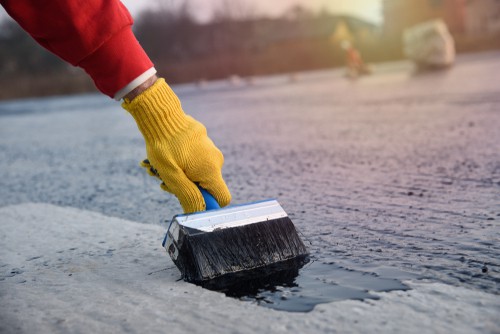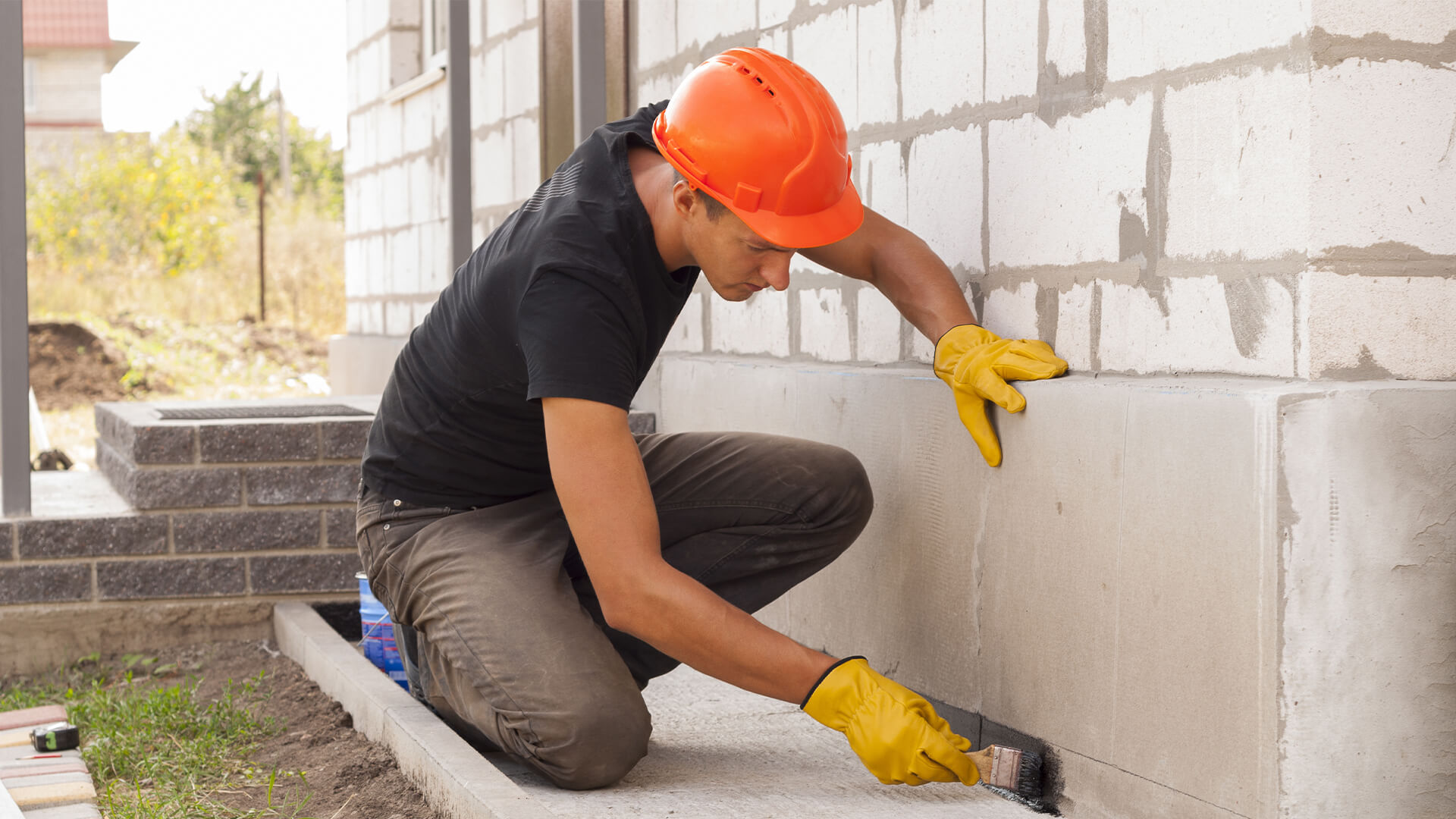The Risks of Ignoring Water Solutions in Your Home
Just How Waterproofing Works: A Detailed Take A Look At Techniques and Technologies
Waterproofing is vital for protecting structures from moisture-related damage. It involves various strategies and modern technologies that create barriers versus water breach. Traditional techniques, such as compacted clay, exist together with contemporary developments like liquid-applied membranes. Understanding the nuances of these approaches is crucial for effective application. The effectiveness of any type of waterproofing service pivots not just on the techniques made use of yet likewise on continuous upkeep and examination. What are the essential variables that influence long-lasting efficiency?
Recognizing the Fundamentals of Waterproofing
Waterproofing is an important process that shields frameworks from water intrusion, which can cause substantial damages gradually. This method includes the application of different materials and strategies developed to develop a barrier versus wetness. The primary objective is to avoid water from passing through surface areas, which can create wear and tear, mold development, and architectural instability.Various elements influence the choice of waterproofing method, consisting of the type of structure, its location, and environmental problems. Recognizing the physics of water motion and the buildings of different products is essential in selecting an efficient waterproofing solution.Effective waterproofing not only safeguards structures however likewise improves their longevity and honesty. Generally, it is incorporated right into the style stage of construction to ensure detailed defense. As awareness of water-related issues expands, the value of understanding waterproofing basics comes to be increasingly clear to architects, home builders, and homeowner alike.
Standard Waterproofing Techniques
Typical waterproofing techniques have been made use of for centuries, counting on time-tested methods and materials to guard structures from water damages. Among the oldest techniques includes using clay, which, when compressed, produces an all-natural obstacle against moisture. Additionally, asphalt, a sticky, black product acquired from petroleum, has actually been used for its waterproof properties, often put on roof coverings and foundations.Another strategy entails the application of lime-based plasters, which supply a breathable layer that permits moisture to get away while avoiding water ingress. Thatch roofing, a conventional method still seen in some societies, uses exceptional waterproofing due to its tightly packed straw layers.Moreover, the use of stone and brick has projected, as these materials are inherently resistant to water when effectively set up. In general, standard waterproofing approaches stress the relevance of selecting suitable materials and building and construction methods to improve resilience against water invasion.
Modern Waterproofing Technologies
Innovations in modern waterproofing modern technologies have actually revolutionized the way structures are safeguarded from water damage. Cutting-edge approaches such as liquid-applied membranes and advanced sealants have actually boosted the efficiency and convenience of waterproofing remedies. These modern technologies permit smooth application, lowering the risk of leaks and ensuring extensive protection over complex surfaces.Moreover, the integration of wise innovations, such as wetness sensors and automated surveillance systems, makes it possible for real-time analysis of waterproofing performance. This proactive technique assists in timely maintenance and decreases long-lasting fixing costs.Additionally, improvements in spray-applied coverings supply fast application and exceptional adhesion, adjusting to different substrates while giving durable protection. Methods like polymer-modified systems even more enhance adaptability and toughness, making them appropriate for varied atmospheres. In general, modern waterproofing modern technologies not only minimize water intrusion yet likewise add to the long life and sustainability of structures, noting a significant shift in the industry.
Products Made Use Of in Waterproofing
The performance of waterproofing services greatly counts on the materials made use of in their application. Various materials are used to create obstacles against water ingress, each with special residential properties suited for different atmospheres. Typically made use of products include membranes, finishes, and sealants.Liquid-applied membrane layers, usually made from polyurethane or acrylic, develop a smooth obstacle that adjusts to intricate surfaces. Sheet membrane layers, typically built from rubber or polycarbonate, deal durability and are perfect for bigger locations. Additionally, cementitious waterproofing materials, composed of cementitious compounds, offer exceptional bond and flexibility.Sealants made from silicone or polyurethane are crucial for joints and seams, making waterproofing in construction sure detailed defense. Advanced products, such as geo-composite membrane layers, incorporate numerous features, improving performance. In general, the choice of waterproofing materials is important in achieving long-lasting and reliable water resistance, customized to details task needs and ecological conditions.
Common Applications of Waterproofing
Waterproofing plays a vital function in different sectors, ensuring the long life and stability of structures. Common applications consist of household options that safeguard homes, commercial framework that safeguards organizations, and industrial setups that call for robust protection versus dampness. Recognizing these applications highlights the value of waterproofing in maintaining both safety and security and performance across various atmospheres.
Residential Waterproofing Solutions
Several home owners encounter challenges with dampness intrusion, making reliable property waterproofing services essential. Various techniques exist to address this problem, consisting of interior and outside waterproofing why not try here systems. Inside services often include the application of sealers and coverings to basement wall surfaces, which help stop water infiltration. Exterior techniques usually consist of the setup of drainage systems and waterproof membrane layers that draw away water away from the foundation.Additionally, house owners might consider sump pumps to get rid of water build-up and dehumidifiers to regulate moisture degrees. Proper grading and using seamless gutters also play a crucial duty in managing water flow around the home. By executing these methods, homeowners can substantially lower the risk of water damage and mold growth, ensuring a dry and risk-free living setting.

Commercial Facilities Protection
Efficient waterproofing remedies play a crucial duty in the defense of commercial facilities. Foundation waterproofing Omaha. These strategies are necessary for guarding buildings, vehicle parking frameworks, and bridges from water damages, which can endanger architectural honesty and result in expensive repair services. Usual applications consist of the installment of membrane layers, layers, and sealants that create barriers against dampness seepage. Locations such as cellars, roof coverings, and exterior wall surfaces are often focused on to assure long life and resilience. Furthermore, waterproofing systems can improve energy effectiveness by avoiding water-related issues that might bring about mold and mildew development and damage. By carrying out robust waterproofing steps, homeowner can secure their additional resources investments and maintain functional effectiveness, ultimately adding to the general sustainability of business facilities
Industrial Applications Overview
While various industries deal with special challenges, the need for trustworthy waterproofing remedies remains a continuous in commercial applications. Industries such as production, building and construction, and energy typically run into settings where moisture direct exposure can jeopardize structural stability and operational performance. In manufacturing facilities, waterproofing is vital for securing machinery and materials from water damages. In construction, it safeguards foundations and cellars versus groundwater infiltration. The power sector relies upon waterproofing for the defense of equipment in hydroelectric plants and offshore structures. Additionally, food processing industries utilize waterproofing to guarantee hygiene and compliance with safety criteria. Generally, effective waterproofing solutions are crucial for boosting sturdiness, security, and performance throughout various commercial settings.
Maintenance and Longevity of Waterproofing Solutions
Waterproofing services are designed to offer long-lasting defense versus moisture breach, regular upkeep is crucial to ensure their performance and durability. Routine evaluations play a considerable function in determining prospective issues such as splits, peeling off, or signs of water damage. Addressing these issues promptly can protect against additional damage and pricey repairs.Additionally, cleaning up the surface of waterproof areas assists remove dust and particles that could compromise the stability of the waterproofing barrier. It's additionally advisable to reapply safety coatings or sealers as advised by makers to preserve excellent efficiency. Ecological variables, such as UV direct exposure and severe weather, can impact the life-span of waterproofing materials, making regular assessment crucial
Often Asked Questions
Can Waterproofing Be Applied in Cold Weather?
The inquiry of applying waterproofing in winter raises issues regarding adhesion and treating. Many products may not carry out at their finest in reduced temperature levels, demanding careful option and consideration of particular standards for efficient application.
For How Long Does Waterproofing Usually Last?
The period of waterproofing performance differs based on products and ecological variables. Typically, it can last from five to 10 years, yet normal upkeep and inspections are essential to ensure peak performance and durability.
Is DIY Waterproofing Effective and Safe?
The effectiveness and safety of do it yourself waterproofing depend on numerous factors, including worldly high quality and application method. While some people attain satisfying outcomes, others might run into problems that compromise lasting defense and structural stability.
What Are the Indications of Failing Waterproofing?
Signs of stopping working waterproofing include visible water spots, peeling paint, mold and mildew growth, moldy smells, and dampness in wall surfaces or ceilings - Water Solutions Omaha. These indications suggest compromised obstacles, requiring prompt examination and potential remediation to avoid further damage
Exactly how Do I Select the Right Waterproofing Specialist?
